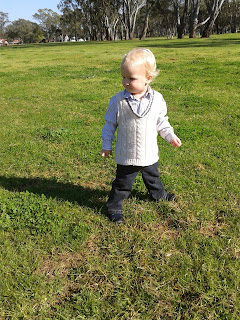Some time ago, while talking to a lady at the Historical Society, I mentioned that I might be recreating some patterns created by Mary Card, circa 1916. She said that was a great idea! And would go really well in the permanent ANZAC exhibit that was being created...
So, me being me, I got started 😄
(I'd like to point out, I had never done filet crochet before, and I /had/ to pick these as my first 😜)
One of the first problems is reading the old patterns. There is always a certain amount of "do this, and that, then cont. and see how you go"

The first piece was taking some time to do, so started on one I originally thought would be the hardest.
I used a natural colour 20 ct cotton, with the smallest hook I have. As you can see above, next to the pen it really is quite small. I started wearing a bandaid on one of my fingers to prevent the stabbing of my cuticle.
Each leaf/petal had to made, then joined together with little petals and a first row of border before a star picot border was worked all around.
So many picots!!!
Next was a decent blocking out to make it neat and tidy for the next stage
So many picots!!!!!
While the filet was drying, I started on the linen centre. I cut the linen to size, and took some care about pulling and cutting the threads to make the cross shape.

Next was crocheting around the linen to make the hem and a border to make it easier to add to the filet.
With several deep breaths, and no kids, TV, or appts, I crocheted the linen into the filet. Finished. Phew!
Total time approx 50 hours
Mary Card designed this d'oyley, for the pattern to be sold to raise money for the Red Cross. At sixpence a copy, the sum of 60 pounds was raised and sent to Red Cross headquarters.
I handed this recreation to be accessioned for the display.
On to the next piece.
Fortunately I had been looking at a book buying site, and thought I might as well try - and I found that someone has been putting Mary Cards' patterns into modern terms and charts. So I bought it. And it arrived within a week!!
I got along quite well with the chart to start with. As this was also 20 ct cotton and the same small hook it was back to bandaids on finger again.
The centre section caused me some issues but got through it all.

Got the main piece finished. Onto the border. Read it. Read it again. Give it a go. Read again. Get it started...oh boy this is going to take forever. And only a couple of weeks til display.
Decision- leave for later. Start on other one.
Total time - tba
*Mary Card designed this to raise money for the French Red Cross.
"Life is mostly froth and bubble
Two things stand like stone
Kindness in anothers trouble
Courage in our own"
I had originally started on the ANZAC soldier piece before Christmas. As the design included some tricky stitches that were very awkward to manipulate, I had decided to leave it for more time. When I picked it up again I was taking about 40 min a row.
I then did the two above pieces. After some thought, and confirming my memory of what Mary Card had written, I opted for an option she suggested. I made it without the eucalypt leaves and flowers border, and to a size that could be put on a scrapbook (for keeping news articles, memorabilia, and letters). I had a frantic 2 weeks of visitors, appts., holidays, etc, etc while trying to fit in making this whenever I could to be ready. Finally finished last Friday night. Washed and pinned it out to dry, before I handed it in to be accessioned on Saturday morning (Bit of a rush that morning too. I also had to be somewhere for spinners demo, and then a family thing)
Total time approx 45 hours
Rather proud of my efforts. Very proud that they are going into a permanent museum exhibit. I'll get to see it in the display next week. Will take photos 😃



























